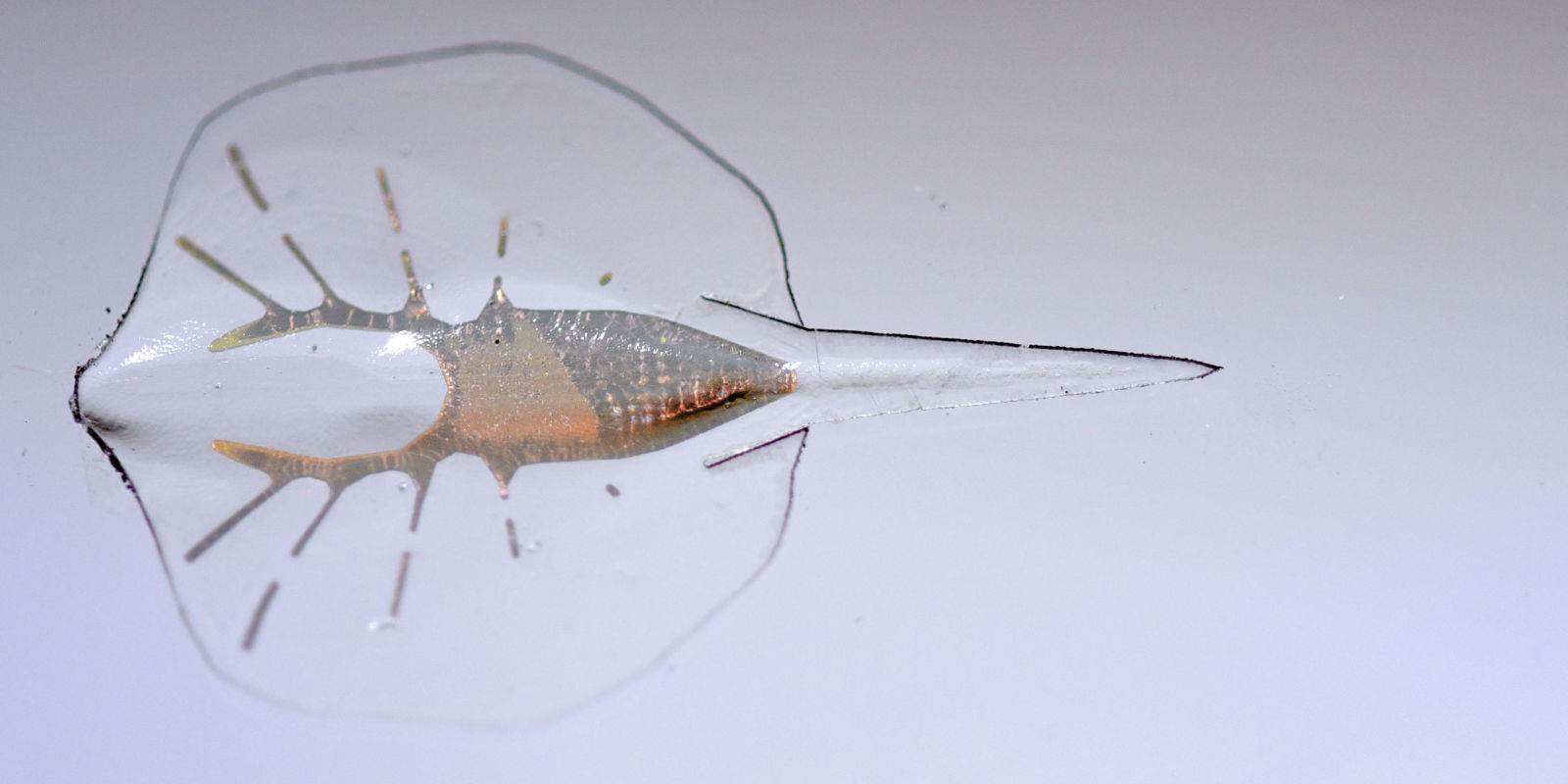What do you get when you mix the heart cells of a rat with silicone from breast implants and then sprinkle in a bit of gold and genetic engineering? No, not Trump’s next trophy wife — you actually get this incredible “living” robot. Developed by a team of researchers at Harvard University, the bio-engineered marvel looks, flexes and swims just like a tiny stingray.
The stingray-bot is made up of four distinct layers: a silicone substrate that forms its body, a skeletal system made of gold wire, a second layer of silicone that insulates the skeleton and, finally, 200,000 genetically-engineered rat cells. Those cells are designed to contract when exposed to a specific wavelength of light. When they do, the robot effectively swims in the same undulating manner as its namesake. What’s more, the “biological life-form,” as lead researcher, Kit Parker, describes it, automatically follows the light source as it swims through the nutrient-rich liquid that keeps its cells alive, allowing it to be remotely controlled.
The bio-bot can’t survive outside of the lab yet. Even if it didn’t need its specialized liquid, the rat cells have no immune system and would be immediately attacked by bacteria and fungal pathogens. Even so, Parker hopes that it will lead others to develop a complete, genetically-engineered heart, among other things.
“Roboticists and engineers can see different ways to use biological cells as building materials,” Parker told Popular Mechanics. “Marine biologists can take a look to better understand why the muscle tissues in rays are built and organized the way they are.”
(39)

